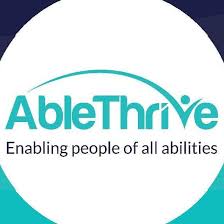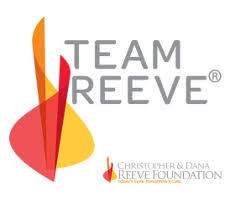|
Sending best wishes for a Merry Christmas/Happy Hanukkah!! For last minute gifts to be delivered before the holidays: bit.ly/memoiroffer
The next segment of our story: Most Sundays, Beth wheeled over a mile and a half from her Stanford dorm to the local farmer's market with friends. The unused push handles on the back of her wheelchair made handy holders for bags of fruit, vegetables, bread, and cheese. She also liked the market at San Francisco’s Ferry Building, where vendors offered enough free samples to make up a meal. On a weekend trip with her law school roommates, Beth held a parrot on the San Diego boardwalk..With several students in one hotel room, the trips were inexpensive. She toured Wine Country in the rolling countryside north of San Francisco was beautiful. When Maria visited over spring break, Beth read from a thick law book while they sunned on the beaches at Santa Cruz and Half Moon Bay. One night as she transferred into bed in her dorm, Beth fell to the floor when a wheelchair brake didn’t hold. She attempted to get off the floor on her own for only a short time before texting her three roommates to ask for help. The bed was too high. One of them saved the day (night). Beth’s aversion to asking for help evolved to a reluctant acceptance and the realization that it wasn’t a weakness. All of us need help sometimes. In March, Beth flew to San Antonio with her boyfriend for her reclassification appointment and her first swim meet since Beijing. I encouraged her to sign up for long races; with her unusually high stamina, she easily could rack up several more American Records in addition to the 14 she held. Beth chose not to since the number of records never mattered to her. The international experts at the Texas meet assigned her the same exact classification, despite the wide range of physical function among her competitors. Unless a mass retesting of S3 women resulted in classification accuracy—not at all likely—Beth’s odds of medaling at the next Paralympics remained low. Reconnecting with coach Peggy and other friends at the meet balanced the disappointing news. Beth’s swim times in San Antonio earned her a place on Team USA for the World Championships in the Netherlands, despite not training for the meet and enjoying the River Walk each evening. She declined the Netherlands trip since it interfered with her upcoming summer law internship. After her last race in Texas, Beth hugged Peggy goodbye to return to law school, fondly remembering their seven years of swimming quests. Beth retired from competitive swimming with 14 S3 American Records, seven short course and seven long course. Next: An End and a Beginning!
6 Comments
Working full-time on weekdays for the first time, Beth alternated between domestic weekends and party weekends in Malden near Boston.
The first involved cooking an elaborate brunch or hosting a four-course dinner party with her roommate. Beth’s specialty: our family recipe for Hungarian chicken paprikash. Party weekends translated to dancing with friends into the early morning hours. Beth also prioritized reading more classics as well as making time for must-see Harry Potter movies like “The Half-Blood Prince.” The three best friends from high school reunited when Ellen visited. They waited in line for brunch at The Friendly Toast in Cambridge and rode the elevator to the top of the Prudential Center in Boston. Beth's swim coach Peggy and her daughter arrived for the Boston Marathon in April. Jess qualified for the marathon, a runner in addition to a swimmer. Beth and I arranged for a day off from work. We left Jess in Hopkinton to start the race, and I drove Beth and Peggy to Wellesley. We watched the runners and athletes in wheelchairs go by the main drag on Washington Street. Next, we drove into Copley Square in Boston where the sculptures of the tortoise and the hare celebrated the marathon since 1897. The crowds and traffic in Boston swelled to even more intense levels with the event. Runners finished the 26 hilly miles proudly—and in pain. I struggled to understand but then again, I’ve never been an athlete. The numbers for the 2009 Boston Marathon topped 20,000 athletes and 500,000 spectators. A pro at long plane travel, Beth flew to Manchester in May for her fourth and last trip to England's Paralympic World Cup. She swam fast and earned a final bronze medal in the 50 back, a nice surprise since she hadn’t been training. The International Paralympic Committee approved an official reclassification request from U.S. Paralympics for Beth. She would schedule a reclassification appointment at the upcoming CAN-AM meet in San Antonio. My November Serendipity Newsletter includes a hardcover book giveaway!
------ And here's the next blog segment of our story: The inauguration of President Barack Obama began the New Year. Beth and I flew to California for the first time, taking the BART train from the San Francisco airport and the Caltrain to Palo Alto and Stanford. We stayed in a hotel near the Caltrain station and walked to campus. Beth met with staff at the Diversity and Access Office and the law school. A large area under construction near Stanford Law would be the new graduate dorms where she would live. Much closer to classes than when she lived in Harvard’s Quad, with the added advantage of no snow and ice. We walked under the canopy of trees on Palm Drive. Beth reconnected with two Harvard swim team friends who worked for Facebook in downtown Palo Alto. At one of Stanford’s heated outdoor pools, I watched Beth while I returned work-related calls. She put her hair in a ponytail, stretched on a swim cap, and swam freestyle, backstroke, and butterfly laps. Each movement was the result of years of practice. After, she lifted herself out of the pool at the corner to sit on the deck. Shining in the sun, she looked up at me with clear blue eyes and an easy dimpled smile. I wished I could have glimpsed that singular moment after her spinal cord injury. Beth couldn’t move at all in intensive care almost 10 years earlier, a time when no one imagined her swimming laps in January under California's winter sun. She’d also come a long way from floating free in the rehab pool in Green Springs, Ohio. The next day, Beth’s right elbow swelled to the size of a baseball, an occasional recurrence aggravated by any kind of physical stress, extra wheeling or swimming or maybe getting bumped the wrong way. On our flight back to Boston, I suggested a power wheelchair to use only part of the time. Beth wouldn’t consider it. Next: Overseas travels, again! In her new Malden apartment late one night, Beth transferred from the wheelchair to her bed, and a wheel lock didn’t hold. She tumbled to the floor. Her roommate Lizzy slept nearby in the next room.
Beth’s deep aversion to asking for help resulted in close to an hour’s struggle to get back into bed. And raw rug burns on her knees. She accomplished the feat only after creating a series of higher levels with pillows and anything else she could reach. If it had been me, I’d have asked for assistance right away. Beth considered the solo achievement a victory. John called it unnecessary stubbornness. I nagged her about taking care of the rug burns to avoid infection. Meanwhile, Maria taught her second school year as a lead teacher while Ben attended graduate school at Brandeis. I started a new nonprofit job in Wellesley, running programs for residents in need. John settled in at Waltham’s MacArthur School. John soon made many close friendships with the exceptional staff. Some weekends, I met Beth and Maria for lunch or clothes shopping. Maria dressed casually for work, like me, since she often sat on the floor with her preschoolers with a disability. Beth established her preferred style: dresses (or tops with skirts), and boots. The wheels of her chair ruined light colors despite side guards, so she avoided white clothing but not buttons and zippers. Mint Julep in Harvard Square remained Beth’s best source for dresses, though a few she bought weren’t appropriate for work. She saved those for dancing in Boston clubs. Wearing two small white pearls from China in each earlobe, she had blond highlights in her brown hair from the Judy Jetson salon in Cambridge. She replaced the Harvard Swimming backpack with a leather messenger bag that hung from the unused push handles of her wheelchair. We ordered a set of Spinergy wheels with black spokes instead of yellow, to look more professional. Meeting new people in and out of her office, she never hesitated to extend her contracted hand with the HOPE ring. Beth's job focused on international health systems and extensive research for a $7,000,000 grant proposal. After a workday in Harvard Square, Beth occasionally wheeled over the Charles River to swim laps at Blodgett pool and say hello to the coaches. Beth continued to love swimming, though she welcomed the break from swim training. After five years on the U.S. Paralympic National Swim Team, my daughter Beth’s smooth freestyle beat her backstroke times. Within her S3 female classification of mostly quads (those with quadriplegia) from around the world, the ability to swim the freestyle placed her in an even smaller sub-group of less than a dozen who could swim a forward stroke in addition to the backstroke.
Have you ever tried to swim the freestyle without moving your legs and with hands that can’t cup the water? September 13th was the day of Beth’s freestyle race at the Beijing Paralympics. In the packed Water Cube for morning prelims, I watched in dismay as another swimmer in Beth’s heat moved too soon. The false start sent all eight of them back to begin again. It was an unfortunate and rare occurrence for arguably the most important race in Beth’s swimming career. It could be difficult to mentally refocus, and she needed to place in the top eight to progress to finals that evening. Beth placed sixth in the race that immediately followed the false start, an outstanding swim that qualified her for the 50 free final race. That evening, the antics of the big pink cow mascots attempted to diffuse the tension of finals. Exuberant spectators packed the stands. In the ready room before her most-anticipated race, Beth listened to the Van Halen song “Jump” on her iPod, smiling at the “Right Now!” refrain. After 50 months of continuous year-round workouts, this was it! Her favorite coach, Peggy, pushed Beth’s wheelchair up the ramp to her lane. ”I felt prepared going in from all my amazing training at Harvard behind me,” Beth wrote, “and I was able to enjoy the moment as my heat was paraded out onto the deck and behind the blocks.” With music and fanfare, the announcer introduced the eight S3 competitors for the 50 free from Australia, Germany, Great Britain, China, Singapore, Mexico, and South Africa. Plus, the USA! I took a photo of Beth waving on a big screen as she was introduced. I watched a competitor jump on one leg to the starting blocks. Two others walked. They climbed onto the blocks to jump off while the other five, including Beth, started the race in the water. For maybe the hundredth time, Peggy lay flat on her stomach with her body on the deck and her shoulders and head over the pool. She grabbed my daughter’s ankles to hold her feet on the starting wall. Beth floated parallel to the lane lines, then turned on her left side with her right arm straight and pointing the way. She held still until the buzzer sounded, and the event began. Eight women left the starting wall, most swimming the backstroke. Beth’s forward freestyle looked effortless and beautiful. An extraordinary work of art. I stood with her friend Brittany in the USA section. We yelled as loud as we could, though with most of the crowd cheering for the Chinese swimmer, Beth heard only an enthusiastic din. She could see other competitors as she swam, and she gave it her all. “I swam a 1:10.55, a best time and a new American Record, which places me fifth in the world,” Beth said. “What a great race!” Hello, friends! Did you see the second issue of my Serendipity Newsletter? My third newsletter will be sent on August 28. Hope you're enjoying the last weeks of summer!
------ My first week in China passed quickly. Before Linda and I checked into the Continental Grand hotel near the Olympic Green, we rode in a taxi with Matt to his favorite Peking Duck restaurant. The popular dish arrived unassembled at our table with duck pieces, artistic condiments, and very thin pancakes. Matt showed us how to combine the duck and unusual condiments on the pancake before folding it over to blend the different textures. Delicious, but I still preferred the dumplings from Matt’s neighborhood hole in the wall restaurant. We ordered traditional moon cake for dessert. He suggested leaving some food on our plates to avoid being rude, contrary to our American instincts. After dinner, Linda and I said our thanks and goodbyes to Matt, grateful for his hospitality and insights into Beijing culture. At the Water Cube, the morning prelims sessions included all the qualified swimmers in the world in a specific event. The top eight from that group returned for evening finals. I watched my daughter Beth qualify for finals in the 50 back with a top eight time in the morning. Only thirteen S3 female swimmers competed at the 2008 Paralympics in one or both short S3 events. Each higher-numbered classification filled several prelims races with eight swimmers in a heat—in many different events, some with long distances. Beth had remarkable stamina in the water, rare for an S3. The odds of her medaling in any longer event? Probable to certain. Unfortunately, the International Paralympic Committee had decided that races longer than 50 meters were not an option for S3 females at the Paralympics. The adorable pink cow mascots in Beijing entertained the crowd at the WaterCube before finals. An unusual plastic costume inflated around and above the person wearing it, extending to about seven feet tall. Beth wrote in her blog: “Before every finals, three of these blow-up cows jumped around on deck and occasionally fell down . . . and couldn't get back up!” In the finals for the 50 meter backstroke, Beth finished eighth in the world, quite close to her personal best time of 1:16.13 for the stroke she learned first. The most important race of her seven-year swimming career was next, just two days away. It would all come down to the 50 freestyle race. Look for the 2nd issue of my Serendipity Newsletter on July 24!
------ After visiting Beijing’s Forbidden City, I sat with Matt and Linda in the Water Cube one evening for finals. The crowd buzzed when a group of men and women entered the stands in the athlete section. Matt pointed out Hu Jintao, the President of China, before the announcer introduced him. The President watched the competition without any apparent security. Matt said some of the people with the President would be guards. However, only police possessed guns in China, so public appearances held less threat for the President than in the United States. Capacity crowds of 17,000 packed the dazzling Water Cube for each session. Finals at big swim meets, always exciting, notched up in Beijing with the addition of an amazingly responsive crowd and the fanfare of the Paralympics. I followed every race closely, cheering for Beth’s friends and teammates. Many swimmers from other countries also had become familiar to me after six years of national and international meets. Team USA battled to win the gold medal count. U.S. families and friends cheered as Linda’s daughter Elizabeth tossed a flower bouquet to her mom up in the stands after receiving a medal for her race. After finals, Matt shared the best dumpling shop. From a dimly-lit street in his neighborhood, it didn’t look like a business of any kind. We sat at one of a few old wood tables in a cluttered little space. A cook stood at a small flour-dusted table in the same room to make the dumplings and carried them to a back room to be cooked. Matt practiced his Mandarin language skills with the cooks who brought us several round wooden bowls of delicious dumplings. They were the best dumplings I ever had, served with an unusual and wonderful dipping sauce. The entire meal for all three of us cost the U.S. equivalent of $2, including three water bottles. We always used only bottled water to drink and to brush our teeth. Walking back to Matt’s apartment, we passed a building with a big rectangular window frame with no glass or screen. Inside, two men cooked little pieces of meat on a flat grill and speared the meat on sticks. We bought three beef sticks, one for each of us. Exotic spices complimented the delicious meat. Linda and I shared a nervous laugh, wondering if the beef was really beef. Would we get sick from undercooked meat or something else? Thankfully, we didn’t. Next blog post on July 31: my favorite place in Beijing! The climax of Beijing’s Opening Ceremony featured one athlete.
He transferred out of his wheelchair into another attached to an impressive pulley system. A lighted torch attached to the back of the chair. He pulled himself up to the open section on the dome of the tall stadium and kept climbing higher to light the Olympic torch over the top. The athlete procession followed. Team USA wore flashy Ralph Lauren suits with red, white, and blue silk scarves. On the taper phase of her training cycle, Beth let Peggy push her wheelchair on the track in the midst of about two hundred USA athletes plus staff. I found her, but she couldn’t see me. “You're surrounded by Team USA and you go down the ramp to the floor of the National Stadium which has 91,000 screaming fans,” Beth said. “It was a pretty surreal experience.” (Click here for professional photos of the athlete procession and other parts of the Opening Ceremony.) The swim competition began the day after Opening Ceremony. I had tickets for prelims and finals on the two days Beth would race, plus finals for the other seven days. She had several days off before her first event. To prepare for her races, she rode the bus to the Water Cube twice a day to work out in the warm up pool and watch the races in the competition pool. U.S. swimmers could leave their restricted area of the Water Cube to visit family and friends in a designated area. I talked to her in an upper hallway between the two pools each day. The exterior of the Water Cube fascinated me with enchanting lights flowing in the imaginative water-like façade. Colorful water fountains burst from the concrete in the central section of the Olympic Green, built on the same invisible vertical line connecting the Forbidden City and the Temple of Heaven. Immense, majestic spaces. Each day, I learned more about the importance of tradition in China. BOSTON! I'll be at the Harvard Coop on June 12 and the Brookline Booksmith on June 14! Next is CHICAGO! My workshop at the Abilities Expo is on June 21, and I’ll be at the Shriners Hospital booth the rest of the day. (bit.ly/mybooktour) AND, my first Serendipity Newsletter premieres on June 27 with new wedding photos, insider updates, and a surprise! Be sure to sign up on my website with your email for the newsletter. (If you already signed up for my blog, there’s no need to sign up again.) I hope June is a fun month for you, too! -Cindy
------ BETH’S SEVENTH AND LAST swimming summer, she lived with John and me in Waltham during the first weeks. I drove her to and from summer workouts at Blodgett Pool in Cambridge, a half hour drive each way. The days revolved around swim training, notched up to a new magnitude. Her right elbow flared again. The bursitis would improve with rest, although that wouldn’t happen anytime soon. She relied on icepacks and Motrin. I drove Beth to my favorite physician, Dr. Ariana Vora, who stopped the constant muscle spasms and pain in her arm with a few acupuncture needles. The same doctor would later do the same for the spasms in my neck. Beth focused on eating healthy, exercising, and lifting weights in addition to swim workouts six days a week. A few days, she practiced twice. I dropped off Beth at the airport for a flight to British Columbia for the last Paralympic meet before Beijing. When she returned to Massachusetts, Harvard coaches asked Beth to share her story at their summer swim camp. John and I moved across town to avoid a $400 a month rent increase at Bear Hill. Beth helped me pack and unpack boxes. Ben moved to Waltham to start his master’s degree at Brandeis University and I helped him find an apartment near campus. He drove from Columbus, Ohio, and rented a one-bedroom apartment on Moody Street, famous for restaurants and shops from many cultures. All five of us gathered for a family cookout before Beth left for the Beijing Paralympics. On August 17th, Beth and the world watched Michael Phelps win his eighth gold medal in the Water Cube. The Paralympics would be held in the same venues as the Olympics. Beth wrote in her blog, “Watching the amazing Olympic swimmers shatter record after record in The Cube has been incredibly exciting, especially knowing that I'll be there soon!” Unwelcome news arrived with the updated IPC World Rankings. Three S3 competitors from Asia, all teenagers, entered the rankings for the very first time. All in the top five. All newly classified. It was a very rare situation. Beginning S3 swimmers usually entered the rankings in the double digits, not the top 5. Then, it usually took years to train with coaches, improve, and earn a top ranking.
There appeared to be two possible explanations: the swimmers had trained for years and not competed (again, for years) OR, they had more physical function than other S3s, a classification fail. Either way, the three brand-new swimmers bumped Beth down the women’s world rankings list from seventh place to 10th in the 50 free and from eighth place down to 11th in the 50 back. Four years before, Beth set a realistic goal to medal in Beijing, particularly in the 100 free. She placed third at the World Cup repeatedly and also earned four medals, including gold, at the Parapan American Games in Rio. Even with the S3 events cut to two sprint races in Beijing, earning a medal at the Paralympics had been attainable--until three new crazy-fast beginning swimmers suddenly grabbed top spots in the S3 World Rankings. Beth’s chances of medaling immediately dropped from possible to impossible. Yet, there was no turning back. I struggled to let go of the disappointment. Beth and Peggy accepted the news and carried on. The new modified and unspoken goal? To make finals (with a top eight swim during morning prelims) in at least one event and to hit the difficult time in the 50 freestyle to earn a new S3 American Record. Swimming workouts reached new heights of intensity. Next: My new life in Massachusetts and Beth’s last months at Harvard! (Signed copies of my memoir, Struggling with Serendipity, are available at bit.ly/memoiroffer) |
Cindy KolbeSign up for my Just Keep Swimming Newsletter by typing your email address in the box. Thanks!Categories
All
Archives
November 2022
|




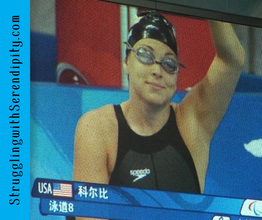
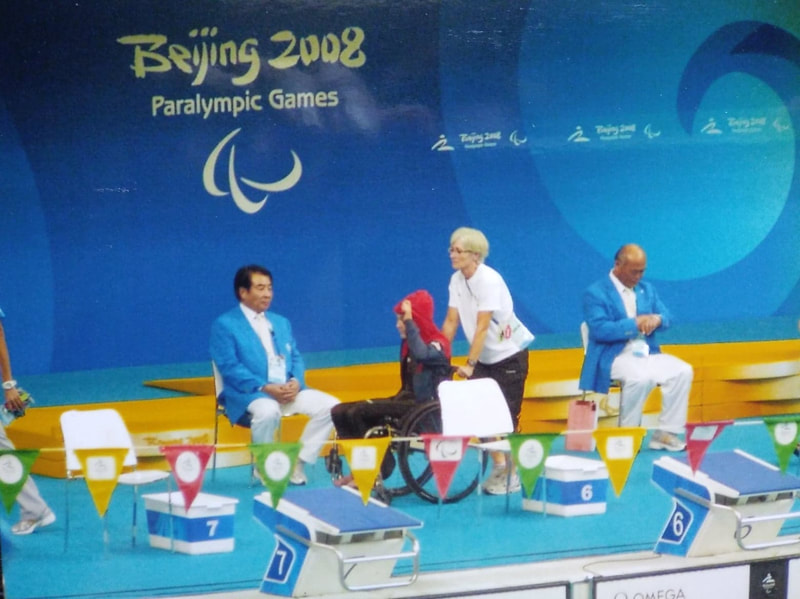
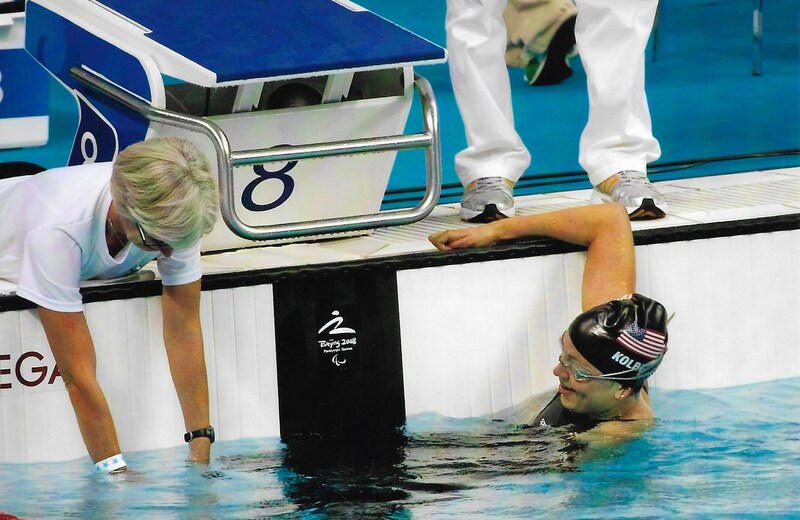

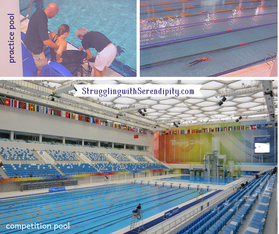

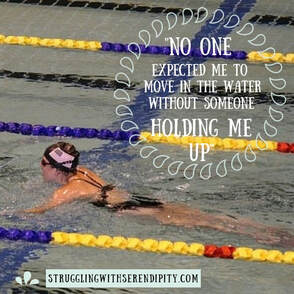
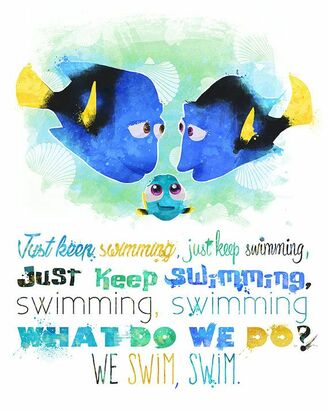

 RSS Feed
RSS Feed





